| Columns Retired Columns & Blogs |
Primare D30.2 CD player Measurements
Sidebar 3: Measurements
The Primare D30.2 had excellent error-correction, the intentional gaps in the data spiral on the Pierre Verany Test CD not leading to audible glitches until they were 2.4mm in length—way better than is required by the CD Standard. The maximum output level from the unbalanced output jacks was 1.35dB higher than the CD standard's 2V RMS, at 2.34V. As expected, this exactly doubled from the balanced jacks, and neither output inverted signal polarity. (The XLRs are wired with pin 2 "hot.") The output impedance was to specification across the audioband, at 98 ohms unbalanced, 199 ohms balanced. (Both figures include the series resistance of the 2m interconnects used in the testing.)
Frequency response was flat within the audioband, from both the balanced and unbalanced jacks (fig.1, top pair of traces). Playing back pre-emphasized data, the player's response took on a very slight swaybacked profile (fig.2, lower traces), but this will probably be inconsequential. Channel separation was excellent, at better than 100dB below 4.5kHz, but decreased slightly above that frequency due to the usual capacitive coupling.
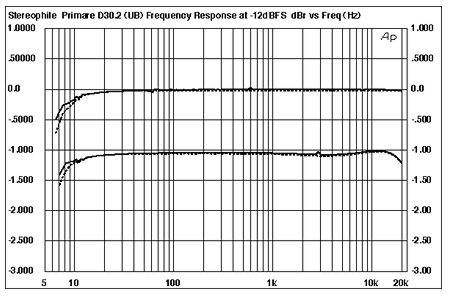
Fig.1 Primare D30.2, unbalanced frequency response at -12dBFS into 100k ohms, with de-emphasis (bottom) and without (top). (Right channel dashed, 0.5dB/vertical div.)
Spectral analysis of the D30.2's output while it decoded dithered data representing a 1kHz tone at -90dBFS revealed a clean noise floor, with no power-supply or harmonic spuriae (fig.2). In fact, all you can see in this graph is the spectrum of the dither used to prepare the CD track, which suggests that the Primare's DAC performance is better than the 16-bit CD medium's intrinsic resolution. Similarly, the error shown in the linearity plot (fig.3) is primarily due to the recorded dither noise. As a result, the Primare's reproduction of an undithered 1kHz sinewave at -90.31dB was essentially perfect (not shown).
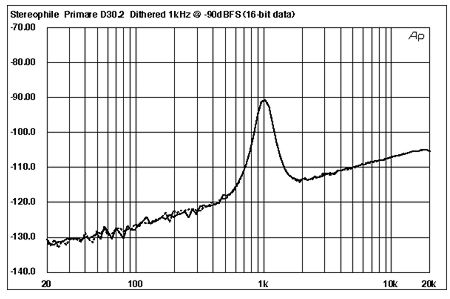
Fig.2 Primare D30.2, 1/3-octave spectrum of dithered 1kHz tone at -90dBFS, with noise and spuriae, 16-bit data (right channel dashed).
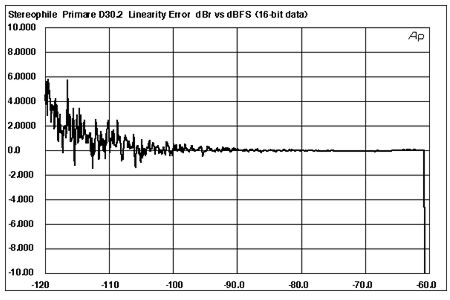
Fig.3 Primare D30.2, left-channel departure from linearity, 16-bit data (2dB/vertical div.).
Distortion levels were very low, with a full-scale 1kHz tone suffering just 0.0013% THD. (This figure, the actual sum of the harmonics, doesn't include the contribution of noise, which in any case is negligible.) The spectrum of that distortion (fig.4) indicates that the highest-level harmonic is the benign second. However, very low levels of the fifth, eighth and ninth harmonics can be seen. Even though these are not anywhere near high enough to be audible, I would have preferred not to see them at all. Intermodulation distortion was also vanishingly low (fig.5).
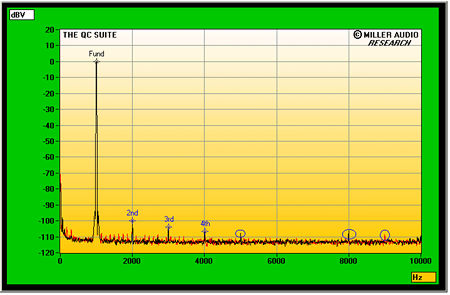
Fig.4 Primare D30.2, spectrum of 1kHz sinewave, DC-1kHz, at 0dBFS into 8k ohms (linear frequency scale).
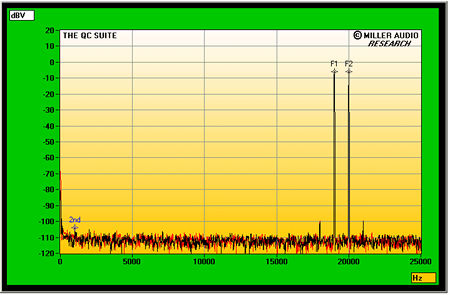
Fig.5 Primare D30.2, HF intermodulation spectrum, DC-25kHz, 19+20kHz at 0dBFS into 8k ohms (linear frequency scale).
The D30.2's rejection of word-clock jitter, assessed with the Miller Jitter Analyzer, was a low 229 picoseconds pean-peak, with almost all the jitter due to a pair of sidebands at the data-related frequencies of 11.025kHz ±229.7Hz (fig.6, red "5" markers). (The test signal consists of a high-level tone at exactly one quarter the sample rate, over which has been laid a 229.68Hz squarewave at the LSB level.) However, a pair of sidebands can also be seen at ±120Hz (blue "4"), which are power-supply-related; and another pair at ±582Hz (purple "8"), which are unknown in origin.
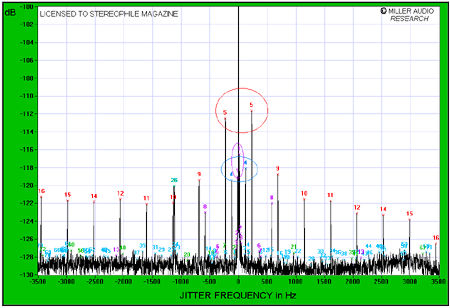
Fig.6 Primare D30.2, high-resolution jitter spectrum of analog output signal (11.025kHz at -6dBFS sampled at 44.1kHz with LSB toggled at 229Hz). Center frequency of trace, 11.025kHz; frequency range, ±3.5kHz.
Overall, this is pretty much state-of-the-art measured performance for a 21st-century CD player.—John Atkinson
- Log in or register to post comments



































